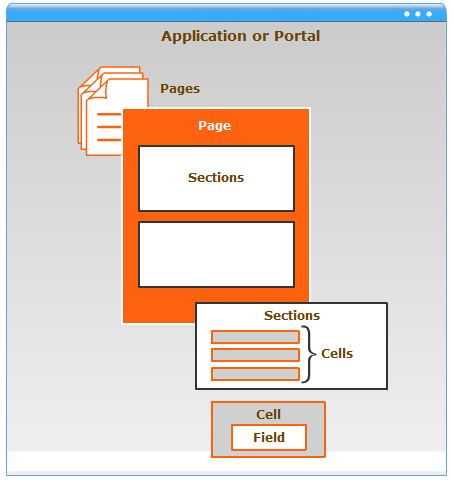Platform user interface components
The following table introduces the hierarchy of Platform user interface components:
| Component | Description |
|---|---|
| Application or Portal | An application or portal is the topmost container for Platform pages. Platform applications are only available to registered users. Portals are public websites that can access Platform data. |
| Page | A page represents a single user interface page within a Platform application or portal. Pages can be formatted in one to four columns. Your Platform application can have multiple versions of each page. Users and roles can be assigned to particular versions. You can also control the user interface based on user and role. For more details, see Security and access control. |
| Section | A section is a container within a page with an optional title and border. Sections can be organized into one to four-column layouts. |
| Page tabs | Page tabs are an optional part of a view page that you can enable to organize multiple sections and reduce vertical scrolling. See Page tabs for details. |
| Cell | A cell is a container within a section that holds a single component. The component represents data being displayed or a control used for editing or interacting with data, such as a list view, grid control, or object field. |
| Field | A field is the lowest level user interface element on a page, wrapped in a cell to render its contents. |
The following diagram illustrates the container hierarchy of Platform user interface components:


